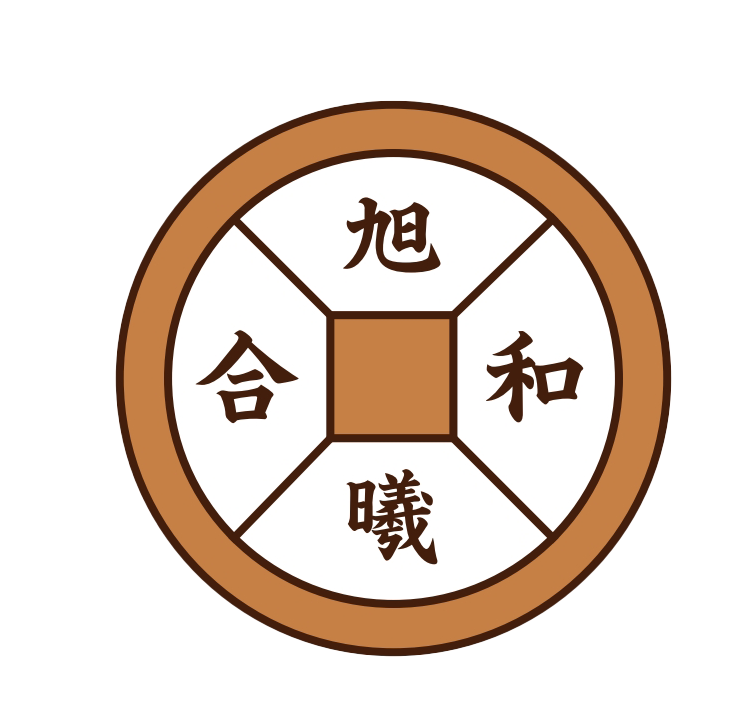ลักษณะและประเภทของเซรามิกจิงเต๋อเจิ้น
เซรามิกจิงเต๋อเจิ้นมีตำแหน่งที่สำคัญในประวัติศาสตร์เซรามิกของโลก:
จิงเต๋อเจิ้นเป็นเมืองหลวงแห่งเครื่องเคลือบดินเผาของโลก เมื่อมองในระดับโลก ประวัติศาสตร์การผลิตเครื่องเคลือบดินเผากว่าพันปีของจิงเต๋อเจิ้น ระดับสูงสุดของการผลิตเครื่องเคลือบดินเผา ความเจริญรุ่งเรืองของอุตสาหกรรมเครื่องเคลือบดินเผา และการรวมตัวของผู้มีความสามารถด้านเครื่องเคลือบดินเผา ทำให้จิงเต๋อเจิ้นเป็น "เมืองหลวงเครื่องเคลือบดินเผาของโลก" ที่คู่ควร
เมืองจิงเต๋อเจิ้นมีประวัติศาสตร์การผลิตเครื่องเคลือบดินเผาอันยาวนาน “เตาเผาพันปีของจิงเต๋อเจิ้นเจริญรุ่งเรือง” ซึ่งสร้างมรดกทางวัฒนธรรมอันล้ำลึกและสถานะทางประวัติศาสตร์ของเมืองหลวงเครื่องเคลือบดินเผาพันปี เมืองจิงเต๋อเจิ้นมีประวัติศาสตร์การผลิตเครื่องปั้นดินเผา 2,000 ปี ประวัติศาสตร์เตาเผาอย่างเป็นทางการมากกว่า 1,000 ปี และประวัติศาสตร์เตาเผาของจักรพรรดิมากกว่า 600 ปี เมืองจิงเต๋อเจิ้นเป็นสถานที่ที่ค้นพบและตั้งชื่อ “เคโอลิไนต์” และ “เคโอลิไนต์” ทั่วโลก และตั้งแต่นั้นมาทั้งสองคำทางธรณีวิทยานี้ก็มีชื่อเสียงไปทั่วโลก
จุดสูงสุดของศิลปะเครื่องเคลือบดินเผาของโลก จิงเต๋อเจิ้นถือเป็นเทคโนโลยีและงานฝีมือเครื่องเคลือบดินเผาขั้นสูงสุดในยุคนั้น และได้บรรลุถึงจุดสูงสุดของทักษะด้านเครื่องเคลือบดินเผาของโลก ประเทศผู้ผลิตเครื่องเคลือบดินเผารายใหญ่ในประวัติศาสตร์และมหาอำนาจด้านเครื่องเคลือบดินเผาในปัจจุบันได้นำเทคโนโลยีการผลิตเครื่องเคลือบดินเผาของจิงเต๋อเจิ้นมาใช้และเรียนรู้จากเทคโนโลยีการผลิตเครื่องเคลือบดินเผานี้ ตั้งแต่ที่เซลาดอนและเครื่องเคลือบดินเผาสีขาวของจิงเต๋อเจิ้นในสมัยราชวงศ์ถังและราชวงศ์ห้าราชวงศ์มีความก้าวหน้าอย่างมาก ประเทศอิสลามบางประเทศก็เริ่มเลียนแบบเครื่องเคลือบดินเผาของจิงเต๋อเจิ้นก่อน จากนั้นเกาหลีและญี่ปุ่นในเอเชียตะวันออก เอเชียตะวันตก และยุโรปต่างก็เริ่มต้นเส้นทางอันยาวไกลในการเรียนรู้ทักษะการผลิตเครื่องเคลือบดินเผาของจิงเต๋อเจิ้น เครื่องเคลือบดินเผาที่ผลิตขึ้นได้กลายเป็นวัตถุที่ได้รับความนิยมไปทั่วโลก ในอดีต เครื่องเคลือบดินเผานี้ส่งออกไปยังกว่า 120 ประเทศทั่วโลก และเดินทางไปแทบทุกมุมโลก จากการประเมินที่ไม่สมบูรณ์ จำนวนเครื่องเคลือบดินเผาทั้งหมดที่จิงเต๋อเจิ้นขายในต่างประเทศน่าจะมากกว่า 300 ล้านชิ้น ปัจจุบัน เครื่องลายครามอันวิจิตรงดงามที่ผลิตโดยโรงงาน Imperial Kiln ในยุคต่างๆ ได้รับการยกย่องในพิพิธภัณฑ์สำคัญๆ ทั่วโลก และกลายเป็นสมบัติล้ำค่าและเป็นตัวพาวัฒนธรรมจีนเผยแพร่ออกไป เครื่องลายครามของจีนและวัฒนธรรมที่เกี่ยวข้องถูก "ขนส่ง" ไปยังทุกส่วนของโลกผ่าน "เส้นทางเซรามิกทางทะเล" ไม่ว่าเครื่องลายครามของจีนจะไปที่ใด อิทธิพลของวัฒนธรรมจีนก็แพร่กระจายไป เครื่องลายครามส่งออกของจีนเหล่านี้แสดงให้เห็นแผนที่โลกของอิทธิพลทางวัฒนธรรมของจีนได้อย่างชัดเจน ไม่ว่าเครื่องลายครามของจีนจะปรากฏขึ้นที่ใด วัฒนธรรมจีนก็มาถึงแล้ว เครื่องลายครามไม่เพียงแต่คงอยู่มายาวนานเนื่องจากคุณสมบัติทางกายภาพที่แข็งแกร่งเท่านั้น แต่ที่สำคัญกว่านั้น "คุณค่าที่ยิ่งใหญ่ที่สุดของเครื่องลายครามของจีนในการศึกษาประวัติศาสตร์โลกอยู่ที่การที่มันสะท้อนถึงกิจกรรมการเปลี่ยนแปลงทางวัฒนธรรมในระดับที่ใหญ่ที่สุด"
บทบาทของเครื่องลายครามของจีนใน "กิจกรรมการเปลี่ยนแปลงทางวัฒนธรรม" ได้แซงหน้าผ้าไหมและผ้าฝ้าย ชา และเครื่องเทศ และกลายมาเป็นบทบาทหลัก การนำเข้าเครื่องลายครามของจีนได้เปลี่ยนแปลงวิถีชีวิต นิสัยด้านสุขอนามัย และมารยาททางวัฒนธรรมในหลายส่วนของโลก เครื่องลายครามของจีนยุติยุคที่ประเทศในเอเชียตะวันออกเฉียงใต้และเอเชียตะวันตกใช้ใบไม้เป็นภาชนะในการรับประทานอาหาร เสริมสร้างและปรับปรุงวัฒนธรรมอาหารของตน และทำให้วัฒนธรรมอาหารของประเทศในเอเชียตะวันออกเฉียงใต้และเอเชียตะวันตกมีอารยธรรม ก่อนที่เครื่องลายครามของจีนจะเข้ามาในยุโรป วัฒนธรรมอาหารและมารยาทบนโต๊ะอาหารของชาวยุโรปยังคง "เรียบง่าย" อยู่มาก ประชาชนทั่วไปในพื้นที่ใช้เครื่องปั้นดินเผาหยาบหรือภาชนะไม้เป็นภาชนะในการรับประทานอาหาร และชนชั้นสูงมักใช้ภาชนะโลหะ เมื่อเครื่องลายครามของจีนเข้ามาในยุโรป ยุโรปก็เปลี่ยนมาใช้เครื่องลายครามของจีน ก่อให้เกิดวิธีการรับประทานอาหารแบบใหม่และก่อให้เกิด "การปฏิวัติอาหาร" เมืองนี้ก่อตั้งขึ้นบนพื้นฐานของอุตสาหกรรมเซรามิก จิงเต๋อเจิ้นก่อตั้งขึ้นบนพื้นฐานของเซรามิก พัฒนาบนพื้นฐานของเซรามิก และเจริญรุ่งเรืองบนพื้นฐานของเซรามิก เมืองนี้เป็นเพียงเมืองเดียวที่เจริญรุ่งเรืองมาเป็นเวลาพันปีเนื่องมาจากการผลิตเซรามิก ตามบันทึกทางประวัติศาสตร์ ตั้งแต่สมัยราชวงศ์ซ่ง เมืองจิงเต๋อเจิ้นมี "เตาเผาในทุกหมู่บ้าน และทุกครัวเรือนก็มีเครื่องปั้นดินเผา" ริมฝั่งแม่น้ำฉางเจียงเต็มไปด้วยเตาเผาและโรงงานเครื่องปั้นดินเผา และแม่น้ำฉางเจียงทั้งสายเต็มไปด้วยเรือที่บรรทุกเครื่องเคลือบหรือวัตถุดิบในการผลิตเครื่องเคลือบ เมืองนี้ผลิตเครื่องเคลือบทั่วทั้งเมืองและเป็นหนึ่งในเมืองอุตสาหกรรมแห่งแรกๆ ในประเทศจีนและแม้กระทั่งในโลก

